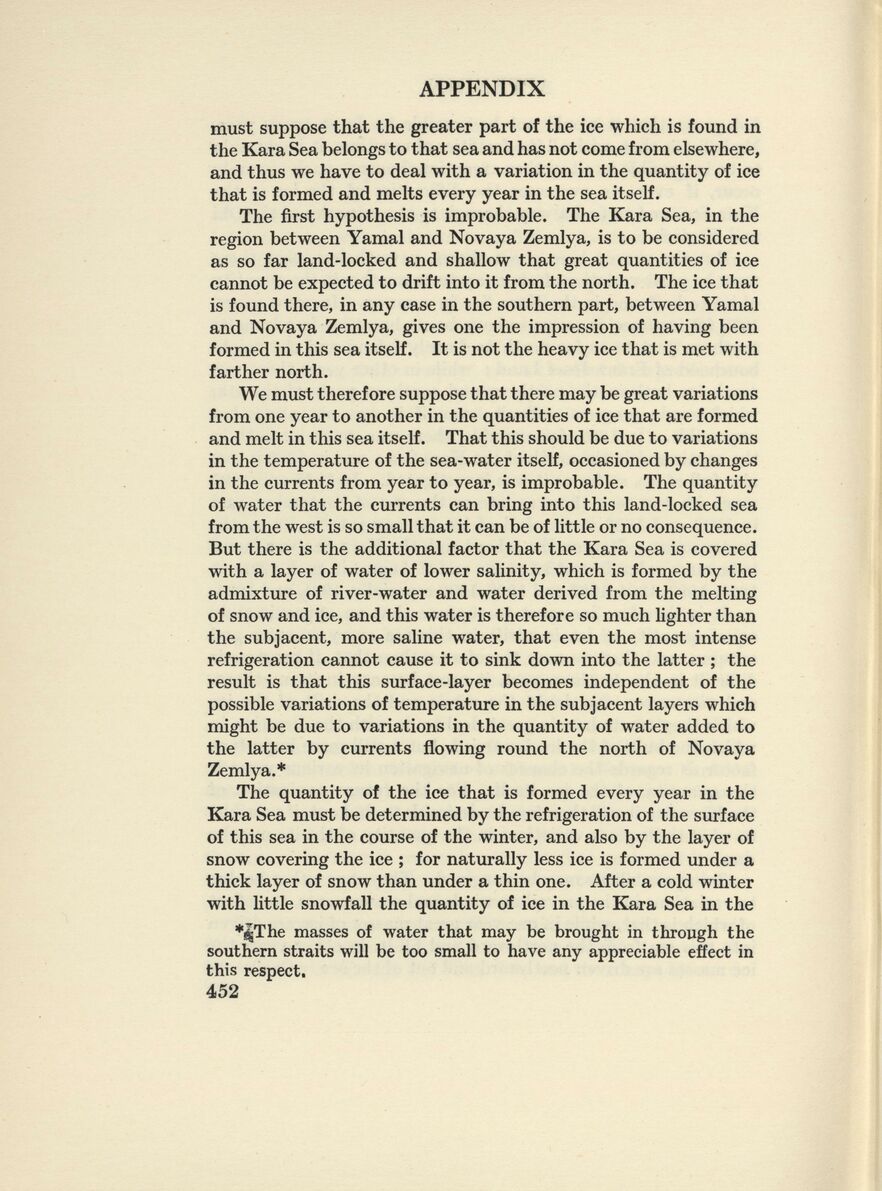
Full resolution (JPEG) - On this page / på denna sida - Appendix: The Navigation of the Kara Sea

<< prev. page << föreg. sida << >> nästa sida >> next page >>
Below is the raw OCR text
from the above scanned image.
Do you see an error? Proofread the page now!
Här nedan syns maskintolkade texten från faksimilbilden ovan.
Ser du något fel? Korrekturläs sidan nu!
This page has never been proofread. / Denna sida har aldrig korrekturlästs.
APPENDIX
452
must suppose that the greater part of the ice which is found in
the Kara Sea belongs to that sea and has not come from elsewhere,
and thus we have to deal with a variation in the quantity of ice
that is formed and melts every year in the sea itself.
The first hypothesis is improbable. The Kara Sea, in the
region between Yamal and Novaya Zemlya, is to be considered
as so far land-locked and shallow that great quantities of ice
cannot be expected to drift into it from the north. The ice that
is found there, in any case in the southern part, between Yamal
and Novaya Zemlya, gives one the impression of håving been
formed in this sea itself. It is not the heavy ice that is met with
farther north.
We must therefore suppose that there may be great variations
from one year to another in the quantities of ice that are formed
and melt in this sea itself. That this should be due to variations
in the temperature of the sea-water itself, occasioned by changes
in the currents from year to year, is improbable. The quantity
of water that the currents can bring into this land-locked sea
from the west is so small that it can be of little or no consequence.
But there is the additional factor that the Kara Sea is covered
with a layer of water of lower salinity, which is formed by the
admixture of river-water and water derived from the melting
of snow and ice, and this water is therefore so much lighter than
the subjacent, more salme water, that even the most intense
refrigeration cannot cause it to sink down into the latter ; the
result is that this surface-layer becomes independent of the
possible variations of temperature in the subjacent layers which
might be due to variations in the quantity of water added to
the latter by currents flowing round the north of Novaya
Zemlya.*
The quantity of the ice that is formed every year in the
Kara Sea must be determined by the refrigeration of the surface
of this sea in the course of the winter, and also by the layer of
snow covering the ice ; for naturally less ice is formed under a
thick layer of snow than under a thin one. After a cold winter
with little snowfall the quantity of ice in the Kara Sea in the
*§The masses of water that may be brought in through the
southern straits will be too small to have any appreciable effect in
this respect.
<< prev. page << föreg. sida << >> nästa sida >> next page >>